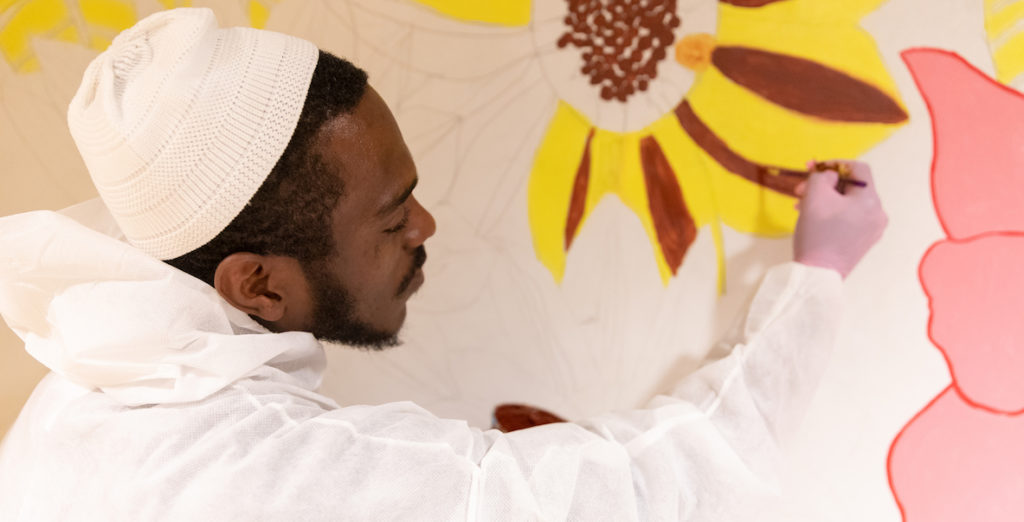In the southeast concourse at SEPTA’s Suburban Station, a poorly-lit and once stained white wall now welcomes commuters with a 57-foot hand painted mural boasting big bright flowers and radiant summer colors. But the real significance of the mural, unveiled this week, is less the art—and more the artists.
In the first 13 weeks of the program, over 430 participants received payments totaling more than $21,950. But the impact of Color Me Back extends beyond cash payment. Participants also work with outreach specialists who connect them with social and behavioral health services and potential opportunities for long term employment.
Michael Belo struggled for years to find a place to live before eventually moving to an apartment he could barely afford. Six months later, he was among the first to show up for the job lottery at Love Park. He came back three days before his name was called to work on the mural in Suburban Station. Once he started, Mural Arts staff quickly recognized his artistic talent, and he was hired as an assistant artist.
“This program will change your life, if you let it,” Belo said at a ribbon-cutting ceremony in front of the mural that he helped create. “I would one day like for every person that is currently homeless to one day be standing where I am.”
Color Me Back—which Mural Arts Executive Director Jane Golden says is the first
Golden says that many of the people that Mural Arts works with have limitations that make a full time job impossible for many reasons. But many of them want to work. “People want to feel useful,” says Golden. “And why not let them transform this city into something more beautiful?”
As Color Me Back continues, Golden says that they will continue to work with SEPTA to create more murals in concourses throughout the city. She says they already looking at several other locations.
“Our goal,” says Golden, “is to be right at that nexus of art and social change…How do we move the needle? How can art be useful? How do we mine the incredible creativity and genius and talent that resides in so many people across our city but that has just been historically unrecognized? Let’s shift that paradigm and put art to work on behalf of our city’s most-vulnerable citizens.”

